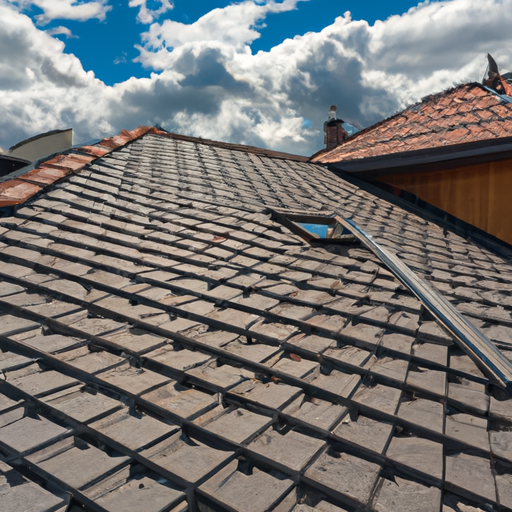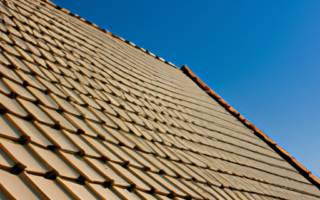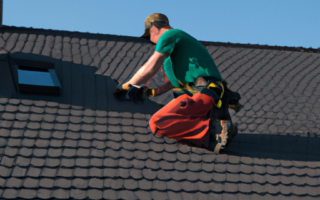An Introduction to Roof Construction: Understanding the Basics
When it comes to constructing a roof, understanding the basics is essential. Whether you’re building a new home or replacing an existing roof, having knowledge of roof construction techniques and materials can help you make informed decisions throughout the process. This comprehensive guide aims to provide an introduction to roof construction, covering the fundamental aspects that you need to know.
Roof construction begins with the selection of appropriate materials. The choice of roofing materials can range from traditional options like asphalt shingles and clay tiles to more modern and sustainable choices such as metal roofing and green roofs. Each material has its unique characteristics, including durability, cost, and aesthetic appeal, so it’s important to consider your specific requirements and preferences.
Once the materials are chosen, the next step is to understand the various construction techniques involved. The framing of the roof plays a crucial role in its structural integrity. Common roof framing systems include truss, stick, and panelized roofs, each with its advantages and considerations. Proper understanding of these systems is important to ensure the roof can withstand different weather conditions and support the weight of the roofing materials.
Roof slope, also known as pitch, is another essential aspect of roof construction. It affects the aesthetics as well as the functionality of the roof. Steep slope roofs tend to shed water and snow more effectively, while low slope roofs offer more space for installations like solar panels. The choice of roof slope depends on factors such as climate, building codes, and architectural style.
Roof ventilation is a critical consideration that often goes unnoticed. Adequate ventilation helps prevent moisture buildup, reduce energy costs, and prolong the lifespan of the roof. Different types of ventilation systems, including ridge vents, soffit vents, and gable vents, serve to create proper airflow within the attic space, preventing issues like condensation and mold growth.
Finally, insulation is an essential component of roof construction. Proper insulation helps regulate temperature, improve energy efficiency, and enhance overall comfort. Various insulation materials, such as fiberglass, spray foam, and cellulose, offer different levels of thermal performance, fire resistance, and environmental impact. Understanding the insulation options available and their installation requirements is crucial for achieving a functional and energy-efficient roof construction.
Having a solid understanding of the basics of roof construction sets the foundation for a successful roofing project. By considering the materials, techniques, and key considerations mentioned in this guide, you can make informed decisions that lead to a durable, aesthetically pleasing, and sustainable roof for your home or building.
Exploring Different Roofing Materials for Durability and Aesthetic Appeal
When it comes to roofing construction, selecting the right materials is paramount for both durability and aesthetic appeal. The type of material used will not only determine the lifespan and performance of your roof, but also determine its overall look. In this comprehensive guide, we will explore different roofing materials available in the market today.
1. Asphalt Shingles: This is the most popular roofing material due to its affordability, ease of installation, and versatility. Asphalt shingles are available in a wide array of colors and styles, making them suitable for various architectural designs. They also provide good fire resistance and can withstand harsh weather conditions.
2. Metal: Metal roofing materials, such as steel, aluminum, and copper, are known for their exceptional durability. They are highly resistant to fire, rot, and insect damage, making them a long-lasting option. Metal roofs are often chosen for their modern and sleek appearance, and can be customized to mimic other materials, such as shingles or tiles.
3. Slate: If you’re looking for a roofing material that exudes elegance and a timeless appeal, slate is an excellent choice. It is a natural stone that offers unmatched durability and resistance to fire and harsh weather conditions. While slate roofs require professional installation due to their weight, they can last for well over a century when properly maintained.
4. Clay Tiles: Clay tiles have been used for centuries and are known for their distinctive look and exceptional longevity. They are resistant to fire, insects, and rot, and can withstand extreme temperatures. Clay tiles come in various colors and shapes, allowing for unique and eye-catching roof designs.
5. Wood Shakes: Wood shakes provide a rustic, natural look that many homeowners find appealing. They are typically made from cedar or redwood and offer good insulation properties. However, wood shakes require regular maintenance and are more susceptible to fire than other roofing materials. They can also be prone to rot and insect damage if not properly cared for.
6. Composite: Composite roofing materials are a blend of various synthetic materials, usually designed to mimic the look of traditional roofing materials like wood or slate. They offer the advantage of being more cost-effective and lightweight while still providing good durability and resistance to weather conditions.
When choosing a roofing material, it’s important to consider factors such as your budget, climate, architectural style, and personal preferences. Additionally, always consult with a professional roofer who can provide expert guidance based on your specific needs and requirements.
Techniques and Best Practices for Efficient Roof Construction
When it comes to roof construction, employing the right techniques and best practices is vital for ensuring efficiency and durability. A well-constructed roof can withstand harsh weather conditions and provide long-lasting protection for the structure it covers. In this section, we will discuss some key techniques that can help achieve efficient roof construction.
The first step in efficient roof construction is proper planning and design. Before starting any construction work, it is essential to evaluate the architectural design of the building and determine the best roofing system to use. Factors such as the slope, shape, and size of the roof should be carefully considered. Additionally, understanding the local climate conditions and building codes is crucial for ensuring compliance and durability.
Once the planning stage is complete, it is time to focus on the actual construction techniques. One important aspect is the selection and installation of roofing materials. The choice of materials should be based on factors like durability, energy efficiency, and cost-effectiveness. Common roofing materials include asphalt shingles, metal, tiles, and slate. Each material has its own installation requirements, and it is essential to follow the manufacturer’s instructions for proper installation.
Another vital technique for efficient roof construction is proper insulation. Good insulation helps regulate temperatures, reduces energy consumption, and prevents moisture-related issues. Insulation materials such as foam boards, fiberglass, and spray foam can be used to create a thermal barrier between the interior and exterior of the building. It is crucial to install insulation according to local building codes and industry standards.
In addition to insulation, ensuring proper ventilation is also essential. Adequate airflow helps prevent moisture buildup, which can lead to mold growth and structural damage. Ventilation can be achieved through ridge vents, soffit vents, or mechanical fans. A well-ventilated roof promotes energy efficiency and prolongs the lifespan of the roofing materials.
Proper installation techniques are equally important for efficient roof construction. This includes techniques like accurate measurement, precise cutting of materials, and secure fastening. Roofing components such as flashing, underlayment, and drip edges should be installed correctly to prevent water infiltration and leaks. Regular inspections during the construction process can help identify and fix any installation errors before they become larger problems.
Lastly, safety should always be a top priority during roof construction. Workers should follow proper safety protocols, wearing appropriate protective gear and utilizing safety equipment like harnesses and guardrails. Following safety regulations can prevent accidents and ensure a smooth construction process.
In conclusion, efficient roof construction requires the utilization of proper techniques and best practices. Careful planning, selection of suitable materials, insulation, ventilation, and attention to detail during installation are all essential for achieving a well-constructed and durable roof. By following these guidelines, contractors can ensure the longevity and functionality of the roofs they construct.
Key Considerations for Choosing the Right Roofing System
When it comes to constructing a new roof or replacing an existing one, choosing the right roofing system is a critical decision. The roofing system you select will not only impact the overall aesthetics of your property but also determine its durability, energy efficiency, and resistance to harsh weather conditions. To make an informed decision, here are key considerations to keep in mind when choosing the right roofing system.
1. Climate and Weather Resistance
The climate and weather patterns in your area play a significant role in determining the ideal roofing system. If you live in an area prone to heavy snowfall or frequent rainstorms, a roofing system with exceptional waterproofing capabilities is crucial. On the other hand, in regions with extreme heat or strong UV exposure, a roof that offers high resistance to sun damage is essential.
2. Durability and Longevity
Roofing materials vary widely in terms of durability and lifespan. Some materials like asphalt shingles may last around 15-20 years, while others like metal roofs can endure for over 50 years with proper maintenance. Consider the lifespan of the roofing material and how long you plan to stay in the property. Investing in a durable roofing system can save you from frequent replacement and repair costs in the long run.
3. Energy Efficiency
Energy efficiency is a growing concern for homeowners, as it not only helps reduce carbon footprint but also lowers energy bills. Certain roofing materials, such as metal and tile, have excellent thermal properties and can effectively reflect sunlight, reducing the amount of heat transferred into the building. This can help keep your home cooler during hot summer months and reduce the load on your cooling system.
4. Cost
The cost of the roofing system is an important consideration for many homeowners. It’s essential to consider not only the upfront installation costs but also long-term maintenance expenses. While some roofing materials may have a higher initial cost, they may require less frequent repairs and replacements, ultimately saving you money in the long term.
5. Aesthetics and Style
The roofing system you choose should complement the architectural style of your property and enhance its curb appeal. Different materials, such as asphalt shingles, metal, clay tiles, or slate, offer a wide range of aesthetic options to suit various architectural designs. Consider the style and appearance of the roofing material to ensure it matches your property’s overall aesthetic vision.
By considering these key factors, you can select a roofing system that meets your specific needs and preferences. Consulting with a professional roofing contractor can also provide valuable insights and guidance to help you make an informed decision.



